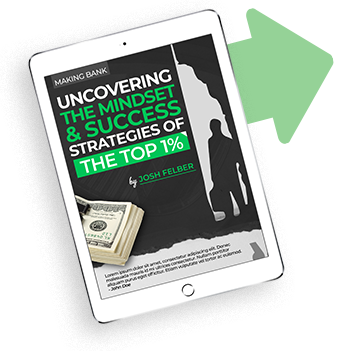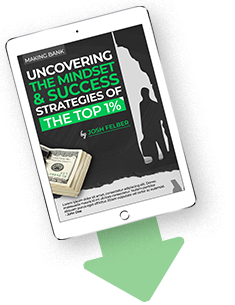What are Fake Assets and How to Make Sure You Invest In Something Real
with Robert Kiyosaki
Video:
Audio:
with guest Robert Kiyosaki #MakingBank S4E23
As our world becomes more and more digitized knowing how to sift through the noise and make wise decisions is more important than ever. We are inundated with clickbait, misleading information, and complex “investment” schemes that can wipe you out financially if you aren’t careful.
So how do you know what is real and what is fake? How do you protect and guard yourself while making solid investment choices and building true assets? How do you prepare your children to be successful?
Learning to identify and understand what Robert Kiyosaki describes as fake money, teachers, and assets will help you navigate in your business and finances. If there are fake money, teachers, and assets that also means you need to be able to identify what is real. We will walk through each of these concepts as well as breaking down the true difference between an asset and a liability.
Fake Money
What do you think of when you hear the term fake money? Is it counterfeit dollars? Monopoly money? Although these are technically fake money, what we are really talking about here has more to do with the control, regulation, and perceived value of the money you use. When the U.S. dollar was taken off of the gold standard in the 1970s our entire currency system shifted from something real and tangible (with a fairly stable value: gold) into smoke and mirrors (based on the “full faith and credit” of the United States: giant IOU).
When your currency is not tied to anything real and tangible the money becomes volatile and ripe for manipulation. Governments can just print more dollars which can lead to inflation and a devaluing of your purchase power. The danger here is that if you don’t appreciate that your money is fake (and is worth less and less as more and more is printed) then you set yourself up for financial failure.
Once you have an understanding of what makes money fake versus real you need to understand the next level: assets.
Asset Versus Liability
Before you can fully understand fake assets it is imperative that you understand the difference between an asset and a liability. The most simple way to think about the difference between assets and liabilities is this: assets put money in your pocket; liabilities take money out of your pocket.
If something is not actively putting money into your pocket, it cannot be an asset. By the same token, if you have invested in something that is actively taking money out of your pocket, it must then be considered a liability. Understanding this distinction is essential in sorting through true assets and fake assets.

Fake Assets
If fake money is not grounded in anything real and tangible that holds value, what then is a fake asset? Fake assets follow the same line of thinking. You might have varying ideas of what makes up an asset. Maybe an asset to you is owning a home or a car. Maybe it is investing in stocks, bonds, and mutual funds. Or maybe assets to you are investing in real estate or commodities.
So what are true assets and what are fake assets? This is where you must go back to the definition of an asset. Is it putting money in your pocket? The house you live in is taking money out of your pocket for approximately 30 years through the mortgage and you are responsible for all of the repairs. The same goes for the car.
Surely stocks, bonds, and mutual funds are assets then? Think again. These paper-based investments are often riddled with steep fees that put money into someone else’s pocket. These types of investments are based on derivatives and fake money.
What does this leave you with? Real-estate and commodities. When investing in real estate that is not your primary residence you collect rent that puts money in your pocket and covers the cost of repairs. This is a true asset that can help you build wealth and value much more stable than fiat currency.
The next type of true asset is commodities. Commodities are any raw material that can be bought and sold. A great place to get started is investing in gold and silver. These commodities can be considered true money and assets. Rather than placing your wealth in a savings account where the interest rate fluctuates and is manipulated by quantitative easing you can invest your wealth in commodities that maintain stable and fairly predictable values.
Education
The key to building true and sustainable wealth is becoming educated. Before you invest in anything at all you must invest in becoming educated on the topic first. This does not mean you have to put yourself into massive student loan debt and get your MBA. This means getting mentors, reading, talking to people who are more successful than you and figuring out what steps they took to get there.
Work with coaches or invest in specified courses from people who are already doing what you want to do (and doing it well). You must take your education seriously if you want to make solid financial decisions both personally and in your business.
The last key is taking action. Experience is an excellent teacher. After you have intentionally and deliberately educated yourself about the investment or business move you want to execute, do it. Everything will not work out every single time. But be wary of getting trapped in the “just one more book” or “after this last course” cycle. Take action and figure out what works for you and your business. Start small, build on the successes, and learn from the failures.
Use your new understanding of fake money and assets to start shifting your mindset about investing and building your assets. Make sure you are building sustainable wealth by investing in real, tangible assets that put money in your pocket first rather than someone else’s pocket.
Topics
- Accelerated Learning
- Artificial Intelligence
- Become Present
- Blockchain
- Branding
- Business
- Education
- Entrepreneurship
- Family
- Finance
- Health
- Health & Wellness
- Internet Marketing
- Investing
- Leadership
- Lifecoach
- Marketing
- Negotiation
- Performance
- Productivity
- Publicity
- Real Estate
- Sales
- Sales Success Habits
- Video Marketing
- Writing
















